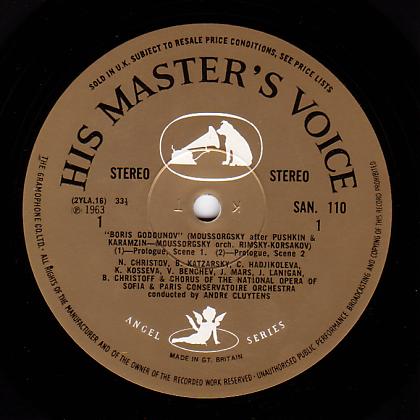The Cambridge Dictionary defines the noun “label” as “a piece of paper or other material which gives you information about the object it is attached to”. That’s exactly what modern colour label printing is all about. The technology involved in digital label printing is amazingly complex yet deceptively simple to use. The latest digital colour label printers from suppliers such as QuickLabel Systems, for example can produce labels at a rate of over 7000 per hour, can synchronize with the production line and gives manufacturers total control over all their label printing needs.
For those of us of a certain age, though, the noun “label” had another meaning. It spoke of Saturdays down at the record shop, sifting through racks of hallowed vinyl or spending far too long in the listening booth checking out the week’s new releases ( to the irritation of the sales staff – who were not above barring the worst offenders). To us, the word “Label” meant not just the information contained on the disc or outer sleeve itself but the record company itself and its roster of artists to whom we held allegiance.
Colourful Labels:
All this came vividly back to me recently when, as a Christmas stocking filler, I was given a set of table coasters, custom label printed to look like old vinyl records. While carefully avoiding using copyright names or logos, it was still pretty easy to identify the record label which the designer was seeking to imitate by the colour label printing, typeface and symbology. RCA’s bright orange label with white and black lettering was there, as was Fontana’s deep blue with its cursive name logo. United Artist’s off-white centre was present and correct and even Island Record’s little tropical palm tree was lovingly pastiched.
While downloads and the increasingly passe CD provide a convenient way of storing or listening to music, there’s no doubt that something’s lost in the sheer joy of the colour labels which were such a feature of old vinyl. Perhaps that’s one reason for its recent resurgence in popularity.
Custom Label Allegiance:
But there was more to the record label than just the printed information about the song and the artist. While the larger labels like Columbia, EMI or RCA had a wide range of artists producing all sorts of different styles of music, some labels were specialists. The odds were that if you liked one of their releases, you’d be tempted to try other artists on the same label.
Labels like Tamla Motown – whose very logo seemed to mimic the chrome motor car style badge labelling of Detroit’s other most famous product – were an obvious example of a house style. Meanwhile, Atlantic Records did for Southern R&B what Motown had done for soul, while Island Records had that quirky and rather unlikely mix of Jamaican reggae and quintessentially English folk such as Nick Drake and John Martin.
This label house style perhaps had a final flourish in the early 1980’s with the last hurrah of the independent or “indie” label. Stiff Records was one of the best examples – ploughing a resolutely singular furrow of post-punk new wave with artists such as Elvis Costello, Wreckless Eric and Nick Lowe. Nick Lowe had the first catalogue release on the label (serial number BUY 1) with “So it goes”. – funny how these little details stick. The whole label package famously went on tour together – twice! Lowe even wrote a song titled “I love my label (and my label loves me)” in praise of the record company. Imagine the big labels like EMI getting that sort of devoted allegiance from their roster of artists.
About the author: Paul Francis is a part time DJ, record collector and self-confessed vinyl junkie. His collection spans the history of popular music from 50’s do-wop to the latest releases, although his real love is for the early 1980’s indie bands.

